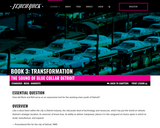
How did Rock and Roll serve as an expressive tool for the working-class youth of Detroit?
- Subject:
- Arts and Humanities
- Performing Arts
- Material Type:
- Full Course
- Provider:
- TeachRock
- Date Added:
- 09/03/2019

How did Rock and Roll serve as an expressive tool for the working-class youth of Detroit?
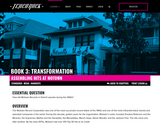
In this lesson, students will learn about behind-the-scenes operations at Motown Records and a few of the company's most important contributors through a "cafe conversation."

In this lesson, students will examine the history and popularity of "We Shall Overcome" and investigate six additional songs from different musical genres that reveal the impact of the Civil Rights movement. These are: Billie Holiday's "Strange Fruit," a poignant Blues song depicting the horrors of lynching; Bob Dylan's "Oxford Town," a Folk song about protests after the integration of the University of Mississippi; John Coltrane's "Alabama," an instrumental Jazz recording made in response to the September 1963 church bombing in Birmingham, Alabama, that killed four African-American girls; Nina Simone's "Mississippi Goddam," a response to the same church bombing as well as the murder of civil rights activist Medgar Evers in Mississippi; Sam Cooke's "A Change is Gonna Come," a Soul song written after Cooke's arrest for attempting to check in to a whites-only motel in Shreveport, Louisiana; and Odetta's "Oh Freedom," a spiritual that Odetta performed at the 1963 March on Washington.
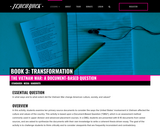
The documents for this activity are drawn from those that might be typically found on an advanced placement history test, supplemented by materials featured in Teachrock lessons. As such, this activity may be used as a means to prepare students for an advanced placement test, or as an assessment tool at the end of a Vietnam War unit. A variety of approaches are provided that allow teachers to use the documents to engage their students in the classroom.
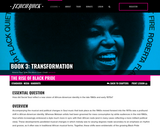
Accompanying the musical and political changes in Soul music that took place as the 1960s moved forward into the 1970s was a profound shift in African-American identity. Whereas Motown artists had been groomed for mass consumption by white audiences in the mid-1960s, Soul artists increasingly embraced a style much more in sync with their African roots (and in many cases reflecting a more militant political view). These developments paralleled musical changes in which melody was to varying degrees made secondary to an emphasis on rhythm and groove, as it often was in traditional African musical forms. Together, these shifts were emblematic of the growing Black Pride movement, with its characteristic slogan, "black is beautiful." This lesson looks at these social and musical changes, with a focus on James Brown and his seminal proclamation of black pride, "Say It Loud, I'm Black and I'm Proud."
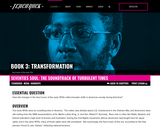
In this lesson, students will examine photographs, live recordings, video interviews, and a government report in order to learn about the historical and cultural context of the Soul music recorded in the 1970s.
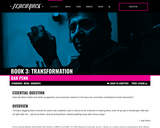
This lesson looks at that juncture in Soul's history, when popular music and the Civil Rights movement seemed almost to be working in support of one another. Aretha Franklin, Otis Redding, Sam and Dave, the Motown acts; so much was happening, and so much was "crossing over," getting to a wide, appreciative white audience. But the focal point here is not what was happening at the front of the stage. Rather, this lesson goes behind the scenes, to see where young white musicians and writers were working with African-American performers to create something that was truly born of a dialogue.

In this lesson students will look at an unlikely film. It's not about a musician. It's not focused on someone they have learned about in their history classes. It's about a man who lived in Watts, a Los Angeles neighborhood, a neighborhood you could definitely call "the outskirts." In Watts, Simon Rodia, born in Italy and a laborer all his life, built his own version of a castle, from materials that others might have considered trash. His creation, the Watts Towers, is in some ways a perfect symbol around which to structure a conversation about Rock and Roll's future, about the creativity at "the outskirts" that will play a role in bringing that future closer, and about the lasting power of art.
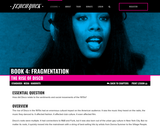
Disco's roots were multiple. It had connections to R&B and Funk, but it was also born out of the urban gay culture in New York City. But no matter its roots, it quickly moved into the mainstream with a string of best-selling hits by artists from Donna Summer to the Village People. The phenomenally successful 1977 film Saturday Night Fever took Disco's commercial popularity to surprising heights. The film's soundtrack produced numerous Top 10 hits and the album sold over 15 million copies.

The documents for this activity are drawn from those that might be typically found on an advanced placement history test, supplemented by materials featured in Teachrock lessons. As such, this activity may be used as a means to prepare students for an advanced placement test, or as an assessment tool at the end of a Cold War unit. A variety of approaches are provided that allow teachers to use the documents to engage their students in the classroom.
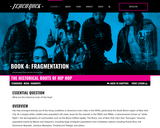
In this lesson, students will examine raw documentary footage, demographic charts, television news stories, and song lyrics to connect the sounds of early Hip Hop to the substandard living conditions in American inner cities in the late 1970s, particularly the Bronx in New York City. Students will compose their own verses to Grandmaster Flash's "The Message," to be followed up with a research-driven writing assignment to further explore the urban environment depicted in the landmark song.
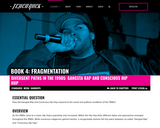
Gangsta Rap grew in part out of the social and political climate on the West Coast, where cities such as Compton, California, became engulfed in gang violence fueled by the crack cocaine epidemic. Longstanding tensions between the African-American community and the police came to a head in the Rodney King case and the announcement of its verdict. Gangsta rappers began to write explicitly about inner city violence. Songs were marked by a liberal use of profanity and images of the gun-toting toughs who lived amidst the brutality of the inner city. Gangsta Rap often overlapped with the East Coast-based "Mafioso Rap," whose practicioners cultivated personas of high-living, power-wielding gangsters who drove fancy cars, drank champagne, and sported intimidating weapons all while promoting a strong sense of kinship. Fiction seemed to become fact when rappers Tupac Shakur and Notorious B.I.G. were victims of unsolved, highly public murders. Soon enough, a countermovement some called "Conscious Hip Hop€" began to emerge, primarily on the East Coast. Many fans saw it as an answer to the often violent and controversial lyrics common in Gangsta Rap. Though in many ways responding to the same conditions to which Gangsta Rap reacted, this subgenre sought to inspire positivity through its lyrics, much like some of the earliest Hip Hop music. Lyrics were intended to challenge and inspire while also questioning the social and political status quo.
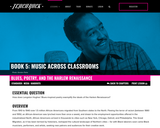
In this lesson, students will discuss how the ideals of the Harlem Renaissance and Locke's New Negro were exemplified by the poetry of Langston Hughes. Specifically, they will examine how Hughes incorporated the vernacular tradition of the Blues in his work, and identify the literary techniques Hughes employs to make his poetry so vivid.

This lesson investigates how electrifying the guitar was a contributing factor to the emergence of a sound that came to define Rock and Roll and, to a large extent, mid-20th century American popular culture. Featuring content from the PBS Soundbreaking episode, "Going Electric," which includes the guitar playing of luminaries Charlie Christian, Pete Townsend, Muddy Waters and Jimi Hendrix, this lesson examines the spirit of curiosity, adaptation and invention that characterized the early 1950s and in the 1960s led to the guitar's emergence as a versatile and attractive instrument for musicians and as the quintessential Rock and Roll icon.
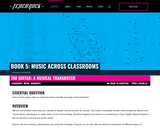
In this lesson, students understand the principles of transduction and the role of transducers by looking at the history of the guitar. They begin by examining how an acoustic and electric guitar function, and then construct their own "digital" guitar from cardboard, conductive tape, and a Makey Makey circuit board. After performing their own "riffs" on their digital guitars, they discuss how each type of guitar transduces sound waves, electrical currents, and/or digital signals.

In this lesson, students listen to Flint-based rapper Jon Connor's song "Fresh Water for Flint" to better understand the sense of frustration and injustice people living in the city felt during the water crisis. Students then experiment with creating their own water filtration system to better understand the scientific and engineering principles behind water treatment. Lastly, they consider the biological effects of lead poisoning and determine specific, political, economic, and scientific causes behind the Flint water crisis.
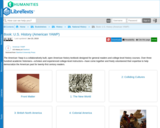
The American Yawp is a collaboratively built, open American history textbook designed for general readers and college-level history courses. Over three hundred academic historians—scholars and experienced college-level instructors—have come together and freely volunteered their expertise to help democratize the American past for twenty-first century readers.
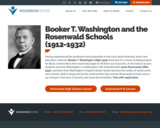
Having experienced the profound racial disparities in the rural South firsthand, writer and education reformer Booker T. Washington (1856-1915) dreamed of a school-building project for Black communities that could help begin to lift them out of poverty. In this history lesson, students examine Washington’s collaboration with philanthropist Julius Rosenwald (1862-1932), and learn how Washington’s hopeful dream slowly became the reality of nearly 5,000 new schools. Built in large part by the communities they served, Rosenwald schools were a ray of hope in the face of poverty and racial discrimination.
The Woodson Center's Black History and Excellence curriculum is based on the Woodson Principles and tells the stories of Black Americans whose tenacity and resilience enabled them to overcome adversity and make invaluable contributions to our country. It also teaches character and decision-making skills that equip students to take charge of their futures. These lessons in Black American excellence are free and publicly available for all.
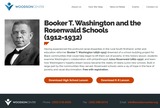
Having experienced the profound racial disparities in the rural South firsthand, writer and education reformer Booker T. Washington (1856-1915) dreamed of a school-building project for Black communities that could help begin to lift them out of poverty. In this history lesson, students examine Washington’s collaboration with philanthropist Julius Rosenwald (1862-1932), and learn how Washington’s hopeful dream slowly became the reality of nearly 5,000 new schools. Built in large part by the communities they served, Rosenwald schools were a ray of hope in the face of poverty and racial discrimination.The Woodson Center's Black History and Excellence curriculum is based on the Woodson Principles and tells the stories of Black Americans whose tenacity and resilience enabled them to overcome adversity and make invaluable contributions to our country. It also teaches character and decision-making skills that equip students to take charge of their futures. These lessons in Black American excellence are free and publicly available for all.

This collection uses primary sources to explore twentieth-century mining in the Mojave Desert. Digital Public Library of America Primary Source Sets are designed to help students develop their critical thinking skills and draw diverse material from libraries, archives, and museums across the United States. Each set includes an overview, ten to fifteen primary sources, links to related resources, and a teaching guide. These sets were created and reviewed by the teachers on the DPLA's Education Advisory Committee.